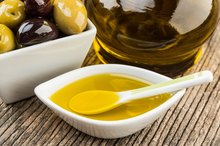The Best Aromatherapy Scents for Each Room of Your House
They say the eyes are the windows to the soul, but the nose may be the key to emotional well-being. You likely know through experience that there's a link between scent and mood and how the connection can affect everything from your work performance to stress levels. So it’s no surprise that aromatherapy (the practice of using natural oils to enhance a person’s health or mood) is having a mainstream moment.
Essential oils, along with their ubiquitous diffusers, have grown increasingly popular in the past few years, regardless of where people stand on the homeopathic barometer. But are amateur aromatherapists using their in-home oils to the best of their ability? We tapped three experts to find out which scents work best for each room in the house.
1. Entryway
Walking into your home should feel like a warm hug. You want — and you want your guests — to feel relaxed, welcomed and as stress-free as possible. Just as you took the time to choose the right welcome mat/shelf/key-and-loose-change bowl, you should do the same for your entryway aroma.
“Warming scents like vanilla work nicely in an entryway," says Lora Cantele, author of The Complete Aromatherapy and Essential Oils Handbook for Everyday Wellness. "However, real vanilla essential oil, or vanilla absolute, can be incredibly expensive for everyday use.”
“I’m partial to holy basil and lemon in the summer,” she says. “But a blend of mandarin and lavender can be just as inviting.” Cantele also recommends using blends of oils when scenting rooms, as to avoid a lifelong correlation between a particular smell and a particular room.
Read more: The Best Organic Essential Oils
- Walking into your home should feel like a warm hug.
- Warming scents like vanilla work nicely in an entryway," says Lora Cantele, author of The Complete Aromatherapy and Essential Oils Handbook for Everyday Wellness, can be incredibly expensive for everyday use.”
2. Living Room
What Are the Benefits of Patchouli?
Learn More
Second to the kitchen, the living room is the place in the house where people congregate and hang out most, so welcoming scents that also evoke a sense of calm are ideal.
“The living room is a place where families often get together and share time,” she says. “A room like this may need to be purified from time to time, so using a diffuser with eucalyptus, tea tree oil, lemon and lavender essential oils would be excellent company.”
3. Kitchen
Across the board, experts agree that lemon or citrus oils work best in the kitchen, and the reason is simple: They smell clean. “I love to use a blend of citrus and herbs in my kitchen to freshen the room,” says Cantele. “Consider lemon and thyme or basil essential oils or sweet orange and Scots pine.”
“The former keeps the kitchen smelling fresh and bright and the latter suggests home-made cookies and cinnamon rolls.”
Read more: 7 Instagram-Worthy Plants for a Healthy Home
4. Laundry Room
Cough Expectorant Home Remedies
Learn More
Another room where fresh, clean scents go a long way is the laundry room. “You cannot go wrong using lavender or lavandin (a variety of lavender) in the laundry room,” Anthony says. “Typically, I recommend the latter, as it yields more oil than traditional lavender without the sedative qualities.”
But Anthony strongly advises against putting essential oils directly in the wash. “Using essential oils in the wash is wasteful,” she says. “If you’re looking to infuse aromas into clothing and linens, try creating a sachet with a single or multiple oils or use a clay diffuser in the linen closet and put a few drops into it once or twice a week.”
- Another room where fresh, clean scents go a long way is the laundry room.
- “ You cannot go wrong using lavender or lavandin (a variety of lavender) in the laundry room,” Anthony says.
- “
5. Bedroom
Young also notes that if you share a bedroom with someone, there are two people’s senses to take into account. “Males and females react differently to scents, so if this is a male-female room, it should be a scent that both enjoy,” she says. “Lavender is always a neutral choice, as is frankincense, bergamot and patchouli.” For male-male rooms, Young suggests using scents that are spicy, earthy or citrusy, and for female-female rooms, she advises floral scents, such as:
- bergamot
- jasmine
- rose
- geranium
6. Basement
Basements, while great playrooms, laundry rooms and makeshift offices, unfortunately tend to always come with one issue: Mold. Thankfully, certain essential oils help combat the growth of this ever-popular household fungus (or stop it altogether) and smell great while doing so.
Whether you use the oils in diffuser form or as part of a refreshing or cleaning spray, they’re a good choice.
7. Bathroom
When it comes to the bathroom, you want to find scents — or scent combinations — that work double-duty. On the one hand, you want the aroma — and the bathroom itself — to be clean, and on the other, it’s a great space to have uplifting smells that will help invigorate and wake you up in the morning.
“Bathrooms need constant attention,” Young says. “The moisture in the air from baths and showers can create mold and scum, so a good way to keep the room clean is by using lemon, tea tree, eucalyptus and lavender essential oils.” (Note: The oils can either be used in a diffuser or in homemade cleaning products.) For an uplifting, energizing vibe, Anthony suggests a blend of grapefruit, rosemary and a touch of peppermint. “The combination is cleansing and brightening,” she says. “It’s a great way to start the day.”
- When it comes to the bathroom, you want to find scents — or scent combinations — that work double-duty.
Related Articles
References
- Malcolm BJ, Tallian K. Essential oil of lavender in anxiety disorders: Ready for prime time? Ment Health Clin. 2017;7(4):147-155. doi:10.9740/mhc.2017.07.147
- Sasannejad P, Saeedi M, Shoeibi A, Gorji A, Abbasi M, Foroughipour M. Lavender Essential Oil in the Treatment of Migraine Headache: A Placebo-Controlled Clinical Trial. Eur Neurol. 2012;67(5):288-291. doi:10.1159/000335249
- Tang SK, Tse MY. Aromatherapy: Does It Help to Relieve Pain, Depression, Anxiety, and Stress in Community-Dwelling Older Persons? Biomed Res Int. 2014;2014:430195. doi:10.1155/2014/430195
- Tan LT, Lee LH, Yin WF, et al. Traditional Uses, Phytochemistry, and Bioactivities of Cananga odorata (Ylang-Ylang). Evid Based Complement Alternat Med. 2015;2015:896314. doi:10.1155/2015/896314
- Posadzki P, Alotaibi A, Ernst E. Adverse effects of aromatherapy: a systematic review of case reports and case series. Int J Risk Saf Med. 2012;24(3):147-61. doi:10.3233/JRS-2012-0568
- Horowitz, S. (2011). Aromatherapy: Current and Emerging Applications. Alternative and Complimentary Therapies, 17, 26-31.
- Lee, Y-L. Wu, Y., Tsang, H.W.H., Leung, A. Y., & Cheung, W. M. (2011). A Systematic Review on the Anxiolytic Effects of Aromatherapy in People with Anxiety Symptoms. The Journal of Complimentary and Alternative Medicine, 17(2), 101-108.
- National Cancer Institute at the National Institute of Health. Aromatherapy and Essential Oils. .
- National Center for Complementary and Alternative Medicine. Aromatherapy.
- National Center for Complementary and Alternative Medicine. Lavender. .
- Perry, N., & Perry, E. (2006). Aromatherapy in the Management of Psychiatric Disorders. CNS Drugs, 20(4), 257-280.
- Wilson, R. (2002). Aromatherapy: Essential Oils for Vibrant Health and Beauty. New York: Penguin.
Writer Bio
Nicole Fabian-Weber is a writer living outside of New York City with her husband and children. She loves home design, yoga, and apparently clichés.









